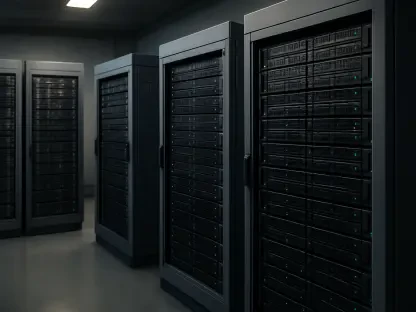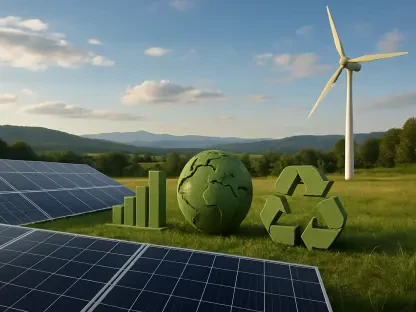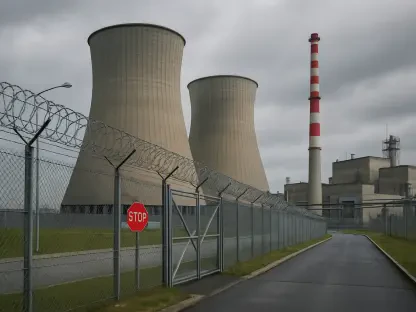Cuba, known for its tropical climate and sunny skies, faces an unexpected challenge in its quest for sustainable energy: cloud cover. As the island nation increasingly relies on solar power to supplement its electricity needs, the reliability of this renewable source is heavily influenced by the weather. Recent fluctuations in solar energy output, primarily due to cloudy conditions, have added a layer of uncertainty to daily life for many Cubans. This emphasizes the importance of understanding how environmental factors can impact energy generation and the solutions being considered to mitigate these challenges.
Current Impact of Cloud Cover
Reduced Solar Energy Output
In recent reports, Cuba’s state-run newspaper Trabajadores highlighted the significant impact of cloud cover on solar energy generation. The reduction in solar radiation from cloud cover in western Cuba has led to a drop of 29 MWh from the expected output of photovoltaic parks. This shortfall highlights the fragility of depending solely on clear skies for reliable solar energy, casting a shadow over Cuba’s efforts to transition to greener energy solutions.
Lázaro Guerra Hernández, Cuba’s director of electricity, has also emphasized the severity of the issue. Solar parks located in Havana, Cienfuegos, and Granma managed to produce only 247 MWh due to low solar radiation. This has exacerbated the ongoing energy crisis, with a reported deficit of 950 MW at noon, rising to 1405 MW during nighttime peaks. The situation is further compounded by multiple thermal units being out of service, putting additional strain on the already vulnerable energy grid.
Daily Life Impact
For Cuban citizens, the unpredictability of solar energy generation has translated into a daily challenge. The need to monitor weather forecasts, not just for rain but also for potential power outages, has added stress to their everyday lives. Blackouts disrupt daily routines, affecting everything from work to personal activities, and causing inconvenience and frustration among the population.
This dependency on weather conditions has highlighted the importance of developing a more resilient and diversified energy matrix. While solar energy offers a clean and renewable source, its reliability is currently undermined by the absence of efficient energy storage solutions and a comprehensive plan to modernize the electrical system. Thus, the Cuban government faces the dual challenge of expanding solar energy capacity while ensuring that the energy infrastructure can support and manage this growth effectively.
Government and Energy Crisis
Ongoing and Future Developments
In response to the pressing need for more reliable energy sources, the Cuban government has announced plans to connect ten additional solar parks to the national grid by the end of April. This move is expected to bolster solar energy generation capabilities, provided that weather conditions remain favorable. However, the lack of proper energy storage systems means that even on sunny days, power generation remains susceptible to fluctuations.
Despite these challenges, the government celebrated the connection of six new solar parks in March. This progress, widely publicized on social media, marks a step forward in increasing the share of renewable energy in Cuba’s overall energy mix. Nonetheless, this progress must be viewed in the context of the existing energy deficit and the need for a more robust infrastructure to support sustainable growth.
Measures and Constraints
The government’s approach to addressing the energy crisis involves several measures aimed at increasing solar energy production. However, the effectiveness of these measures is constrained by the current limitations of the electrical system. Without a holistic plan for modernization and diversification of the energy matrix, any gains from increased solar production risk being offset by operational inefficiencies and the ongoing susceptibility to weather conditions.
An effort to improve energy generation capacity must therefore include investments in advanced energy storage technologies and infrastructure upgrades. These upgrades are essential to create a more resilient grid that can better absorb and distribute the power generated from renewable sources. Additionally, diversifying the energy portfolio to include other renewable sources, such as wind and biomass, could help mitigate the impact of weather-dependent solar energy generation.
Looking Ahead
Cuba, renowned for its tropical climate and sunny skies, is facing an unexpected challenge in its pursuit of sustainable energy: cloud cover. As the island nation increasingly turns to solar power to meet its electricity demands, the reliability of this renewable source is largely dependent on the weather. Recent variability in solar energy output, primarily due to overcast conditions, has injected a level of uncertainty into the daily lives of many Cubans. This situation highlights the critical need to understand how environmental factors can affect energy production and the measures being considered to mitigate these issues. In response, experts are exploring various solutions, including the development of more advanced solar technology and the integration of other renewable energy sources, to enhance Cuba’s energy stability. This underscores the complex relationship between nature and technology in the quest for sustainable power, an important lesson for countries worldwide.









